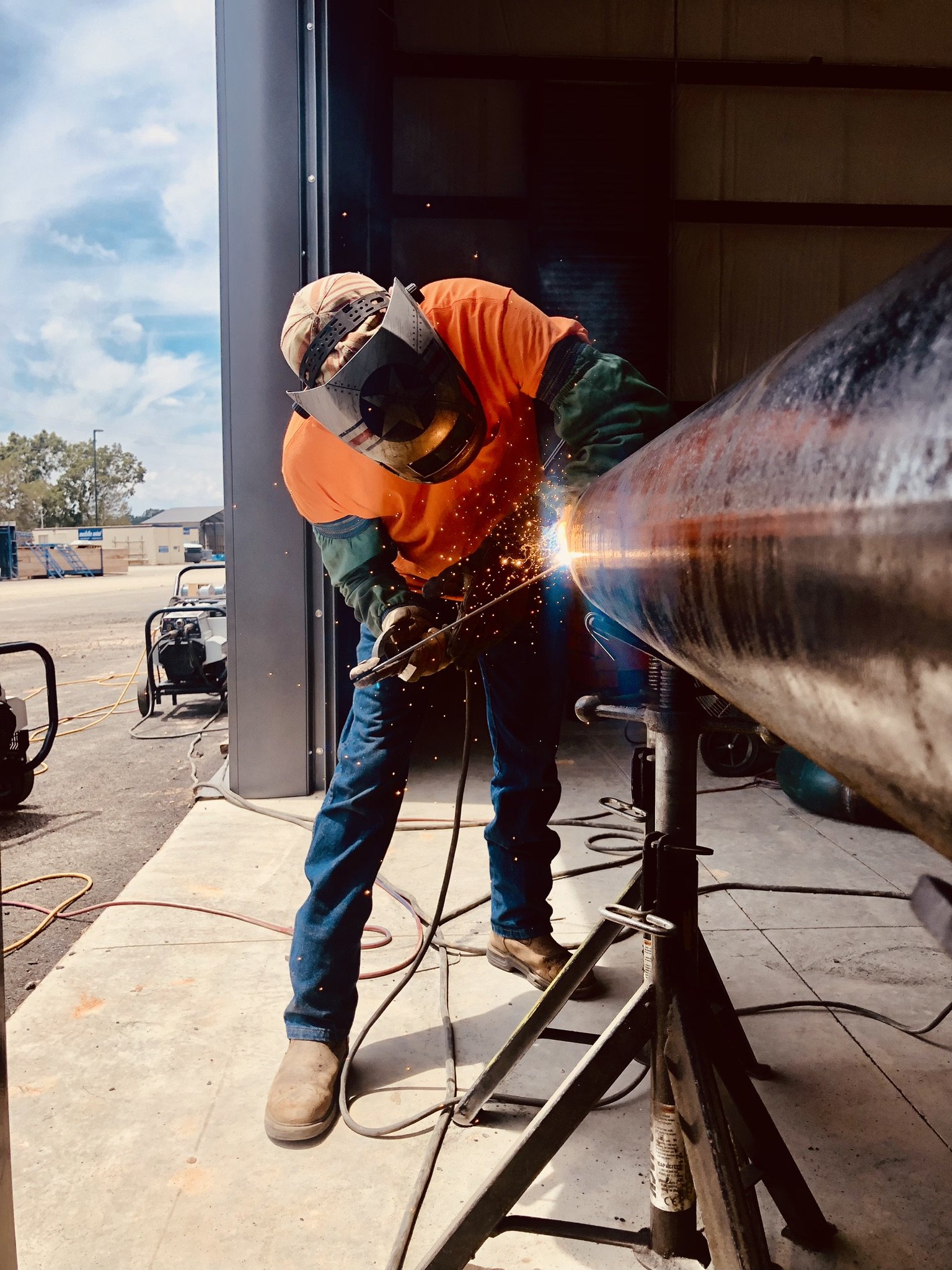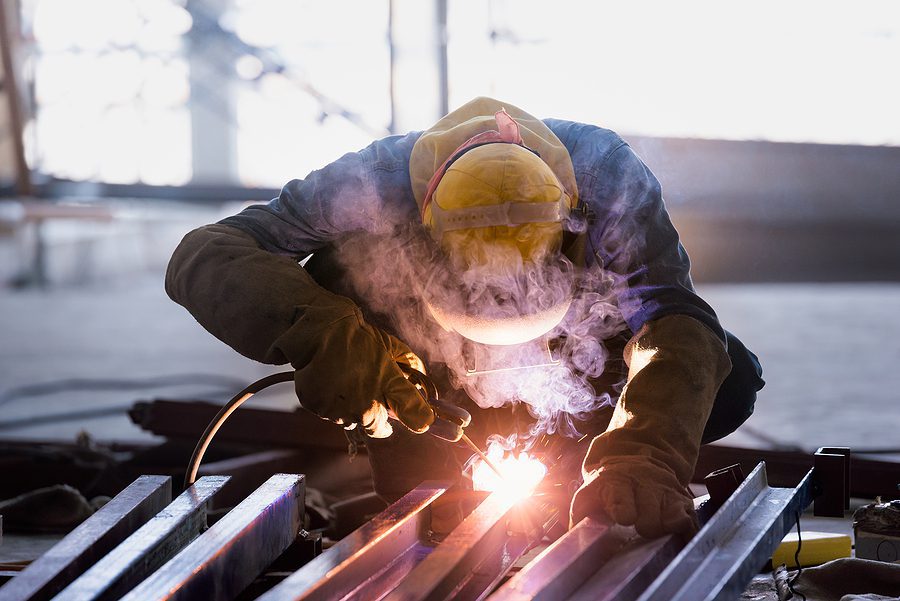Typical Welding Repair Issues and Just How to Address Them Effectively
Welding repair services typically run into a variety of concerns that can endanger the stability of the final item. Common issues include inadequate penetration, porosity, and misalignment, to name a few. Each flaw presents one-of-a-kind challenges that call for certain strategies for resolution. Comprehending these problems is vital for welders aiming to enhance their skills and outcomes. This discussion will check out these common welding repair issues and reliable methods to resolve them.
Inadequate Infiltration
Poor infiltration occurs when the weld steel stops working to completely fuse with the base product, leading to weak joints and potential architectural failings. This issue often stems from not enough warmth input, wrong electrode angle, or inappropriate welding rate. Welders might run into insufficient penetration due to a miscalculation of the necessary parameters for a specific material density or kind. In addition, contamination on the base material's surface can hinder efficient bonding, exacerbating the problem. To address inadequate penetration, welders must ensure ideal settings on their tools and keep a tidy work surface. Normal assessment of welds is advised to identify any type of shortages early, enabling timely corrections and the avoidance of jeopardized structural stability in bonded assemblies.
Porosity
Porosity is a common flaw in welded joints that manifests as tiny gas bubbles trapped within the weld steel. This flaw can jeopardize the stability of the weld, leading to reduced strength and potential failure under stress and anxiety. Montana Mobile Welding and Repair. Porosity typically occurs from contamination, wetness, or incorrect welding strategies, which permit gases to run away right into the molten weld pool. To resolve porosity, welders need to assure proper surface preparation, preserve a clean functioning atmosphere, and make use of appropriate welding parameters. In addition, selecting the ideal filler material and protecting gas can reduce gas entrapment. Normal evaluation and testing of welds can assist determine porosity early, guaranteeing prompt corrective activities are taken, thereby protecting the high quality and dependability of the bonded framework
Misalignment
Imbalance in welding can occur from different elements, including incorrect configuration and thermal expansion. Recognizing the origin is essential for efficient resolution. Numerous correction strategies are offered to realign parts and assure structural honesty.
Reasons for Imbalance
Welding imbalance commonly comes from a selection of underlying concerns that can endanger structural honesty. One key cause is incorrect fit-up of elements prior to welding, which can cause gaps and irregular surfaces. Variations in thermal development throughout the welding process can likewise result in distortion, specifically if the materials being joined have different coefficients of growth. Furthermore, poor clamping and fixturing may fall short to hold elements firmly in position, leading to motion during welding. Poorly conserved equipment, consisting of welding machines and tools, may introduce incongruities in the weld grain, further adding to misalignment. Ultimately, operator error, stemming from not enough training or experience, can also play a significant role in producing misaligned welds.
Improvement Strategies Available
Resolving imbalance effectively needs a combination of rehabilitative strategies customized to the particular issues at hand. One common method is the use of fixtures or jigs to hold components in the appropriate position during welding, making certain regular alignment. Furthermore, preheating the materials can help in reducing distortion and boost fit-up. For considerable misalignment, mechanical adjustment methods, such as utilizing hydraulic jacks or clamps, can be employed to fix the position before welding. Post-weld warmth therapy might likewise be needed to ease anxieties triggered by misalignment. Ultimately, careful examination and modification during the setup stage can avoid misalignment concerns from becoming significant troubles, promoting a smoother welding process and enhancing total structural honesty.
Distortion
Distortion is a common obstacle in welding that can develop from various variables, including unequal heating & cooling. Comprehending the reasons for distortion is vital for carrying out reliable prevention methods. Addressing this problem not only improves architectural stability but likewise enhances the overall top quality of the weld.
Root causes of Distortion
When based on the intense warm of welding, products usually undergo changes that can cause distortion. This sensation primarily occurs from thermal expansion and tightening throughout the welding process. As the weld area warms up, the go to website material expands; upon cooling, it acquires, which can produce interior stress and anxieties. In addition, irregular home heating across a workpiece can aggravate these stresses, causing warping or bending. The kind of product also plays a substantial duty; steels with differing thermal conductivity and coefficients of growth may react differently, leading to unpredictable distortions. Moreover, inadequate joint style and inadequate fixturing can add to misalignment during welding, increasing the probability of distortion. Comprehending these reasons is vital for efficient welding repair service and avoidance strategies.
Prevention Techniques
Effective avoidance strategies for distortion throughout welding focus on regulating heat input and making sure appropriate joint layout. Keeping a consistent warm input aids to lessen thermal growth and tightening, which can lead to distortion. Making use of methods such as pre-heating the work surface can likewise decrease the temperature level gradient, promoting consistent heating. In addition, selecting ideal joint layouts, such as T-joints or lap joints, can improve security and reduce anxiety concentrations. Applying correct fixturing to secure the work surfaces in position further help in maintaining positioning during the welding procedure. Staggered welding series can distribute warm more uniformly, protecting against localized distortion. By using these techniques, welders can greatly lower the likelihood of distortion and boost the overall high quality use this link of their welds.
Splitting
Breaking is an usual issue run into in welding repair work, commonly resulting from numerous aspects such as inappropriate air conditioning rates, material choice, or poor joint preparation. The incident of cracks can significantly jeopardize the honesty of the weld, bring about prospective failures during procedure. To address this concern, welders must initially evaluate the source, ensuring that materials work and suitably selected for the details application. In addition, controlling the air conditioning price throughout the welding procedure is essential; rapid air conditioning can cause stress and lead to splitting. Appropriate joint design and prep work also add to minimizing the threat. Implementing these methods can boost weld high quality and toughness, eventually minimizing the chance of breaking in ended up weldments.

Insufficient Blend
A significant concern in welding repair services is insufficient blend, which occurs when the weld steel does not effectively bond with the base product or previous weld passes - Welding. This defect can lead to weak points in the joint, possibly jeopardizing the honesty of the bonded framework. Factors contributing to insufficient blend consist of insufficient warmth input, inappropriate welding technique, and contamination of the surface areas being joined. To address this concern properly, welders ought to guarantee proper pre-weld cleansing and surface preparation, as well as change their welding criteria to attain appropriate penetration and combination. Normal assessment during the welding process can also help determine incomplete combination early, permitting for timely corrective measures to improve the general quality of the weld
Overheating
While welding fixings can improve structural honesty, overheating offers a significant difficulty that can result in product deterioration. Extreme heat throughout welding can change the mechanical properties of metals, resulting in reduced strength, raised brittleness, and bending. This sensation is particularly important in high-stress applications go to my site where architectural integrity is paramount. Determining getting too hot can include aesthetic examinations for discoloration or distortion, along with keeping an eye on temperature level during the welding procedure. To mitigate the dangers associated with overheating, welders must utilize appropriate strategies, such as controlling warm input, adjusting travel speed, and using ideal filler products. In addition, carrying out pre- and post-weld warm treatments can aid bring back material residential or commercial properties and improve the overall top quality of the fixing, making sure lasting efficiency and safety.
Frequently Asked Inquiries
What Are the Typical Indications of a Welding Defect?

How Can I Check My Welds for High quality?
To check welds for top quality, one can make use of aesthetic inspections, ultrasonic testing, and radiographic techniques. Each method assures architectural honesty, identifies problems, and validates adherence to specified requirements, ultimately boosting the dependability of the welded joints.
What Security Precautions Should I Take While Welding?
When welding, one must prioritize safety by putting on suitable personal protective devices, making certain correct air flow, safeguarding combustible products away, preserving a tidy workspace, and knowing environments to stop accidents and injuries.
Can I Fix a Weld Without Renovating the Entire Joint?
Fixing a weld without redesigning the entire joint is feasible, depending upon the damages (Fabrication). Strategies such as grinding, adding filler product, or making use of a welding process can successfully attend to certain imperfections while maintaining the surrounding framework
What Tools Are Vital for Reliable Welding Repairs?
Necessary tools for effective welding repair services include a welding maker, wire brush, mill, safety gear, clamps, and filler materials. Each device plays a crucial function in making certain top quality and safety during the fixing process. Porosity usually occurs from contamination, wetness, or improper welding strategies, which enable gases to leave into the liquified weld pool. Badly conserved tools, consisting of welding devices and devices, might introduce inconsistencies in the weld grain, further contributing to misalignment. When subjected to the intense warmth of welding, products commonly undergo changes that can lead to distortion. Fracturing is a common concern experienced in welding repair services, usually resulting from various factors such as incorrect air conditioning prices, product choice, or poor joint preparation. A substantial issue in welding fixings is incomplete fusion, which occurs when the weld metal does not adequately bond with the base product or previous weld passes.